Mapping Gendered Agency in Berlin Alexanderplatz (1929)
Digital Humanities gives us tools to analyze stories. But what kind of insights do we really gain from them? In this blog, Lyna Meyrer will use the experimental modernist novel Berlin Alexanderplatz (1929) to show what digital cartography reveals about this complex story of human relationships.
As part of Leiden University’s research traineeship, a team of four students explored the usefulness of digital cartography tools for the study of modernist city novels. Under the title of “Mapping the Modernist Novel” the project, led by Dr Dorine Schellens and Dr Carmen van den Bergh, analyzed two novels: the German classic ‘Großstadtroman’ Berlin Alexanderplatz (1929) by Alfred Döblin, and its lesser-known Italian counterpart Quartiere Vittoria (1936) by Ugo Dèttore. Over seven months, we compiled important quantitative data about both novels in the form of datasets. They comprised information such as: locations and their typology; primary and secondary characters; their occupation and gender; and weather conditions. With the gathered information, we created digital maps using two separate cartography tools: Carto and GeoJson. This allowed us to represent the data in a visual and interactive way, and to see how different data points interact with one another. In that way, the map revealed many new findings—one of them being the close connection between gender, agency, and movement in both novels. I will illustrate this finding here based on Berlin Alexanderplatz using the protagonist Franz Biberkopf and his girlfriend Mitzi as examples.
Berlin Alexanderplatz tells the story of Franz Biberkopf, an ex-prisoner who tries to rebuild his life after being released from prison. As he tries to navigate the metropolis, fate strikes him three times, and he eventually ends up in a whirlwind of betrayal and crime. Along the way, Biberkopf struggles with his sense of agency and responsibility for his actions: a recurring theme throughout the novel that can be read from our maps.
Biberkopf’s agency is limited from the novel’s onset: Although he stands outside Tegel penitentiary “a free man” (Döblin 10), his geographical movement is limited both literally and figuratively. He is not only legally restricted from entering various districts in Berlin (marked red in figure 1), but also finds himself a displaced citizen, with nowhere to go and nowhere to be. He views his newfound freedom as the real punishment (rather than prison), and walks around aimlessly until he meets two Jewish men, Nachum and Eliser. They tell him the story of Zannowich, an Albanian man who came to riches by impersonating European nobility. His son, likewise, became an impostor, but was found out and imprisoned. Though seemingly insignificant at first, this story deeply impacts the protagonist, and bears a significant message about autonomy and agency. The two Jewish men have divergent interpretations of the story: while Eliser concludes that Zannowich’s story shows the power of autonomy, Nachum warns that “you can’t do everything you’d like to” (Döblin 23). Ignoring Nachum’s warning, Franz feels empowered by Eliser’s interpretation, and re-enters Berlin feeling convinced that he is the sole master of his fate.
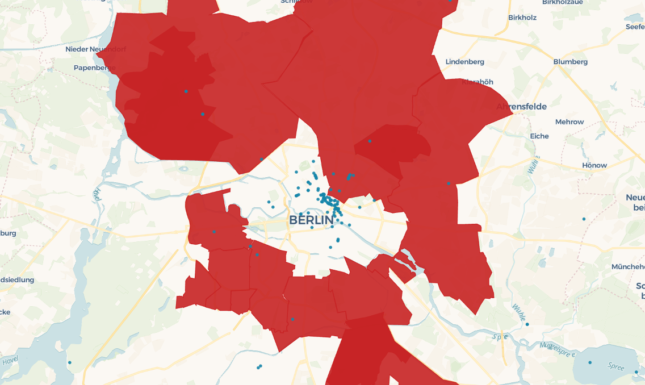
In truth, the opposite is the case: based on his movements throughout Berlin, it becomes clear that Franz is steered by external factors rather than his own will. Once he leaves Nachum and Eliser, he moves in a trance, determined first by overwhelming sexual urges, and later by the need for money. As his activity becomes increasingly determined by extrinsic factors, the little feeling of agency Biberkopf had fades. Besides sexual lust and monetary gain, his movement is predominantly influenced by the social circles he finds himself in—most notably by a group of criminals. Though initially skeptical about getting involved with them, Franz succumbs to them when he agrees to replace one of their other crew members during a heist. From that moment on, our dataset changes the classification of his activities from “unemployed,” “ex-convict” and “newspaper seller” to “criminal”.
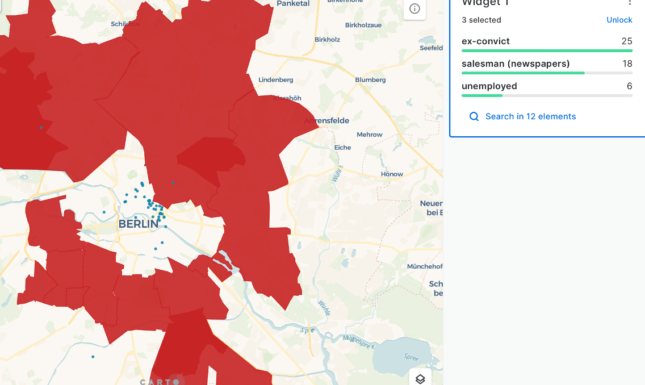
As can be observed in figure 2, when filtering Franz’s non-criminal occupations throughout the novel, we note that his movement is almost exclusively reduced to the center of Berlin. He appears only twice in areas he is legally restricted from (marked in red), one of them being Berlin-Tegel, as he waits for his tram after his release from prison. When Franz’s activity is filtered by his criminal activity, however, the scope of the blue dots representing his location widen, and they become scattered throughout Berlin and its peripheries (fig. 3). Franz even repeatedly appears in places that he is legally prohibited from entering. From this observation, we can determine two qualities that characterize Franz’s criminal activity in Berlin Alexanderplatz: firstly, its occurrence in the peripheries of Belin, and secondly, Franz’s lack of intrinsic motivation, and his diminished sense of agency.
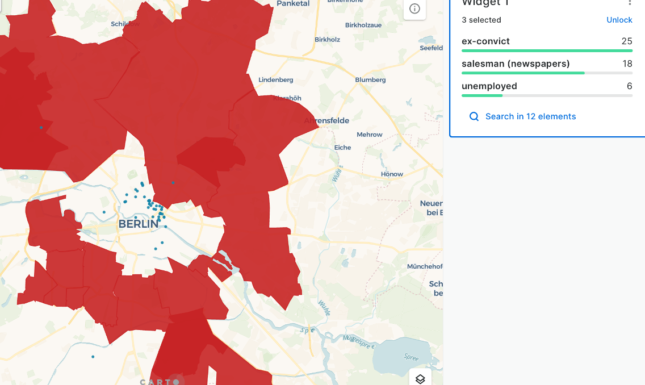
A similar sense of lacking agency in movement is embodied in the female character Mitzi, who is Franz’s girlfriend throughout the novel. Her real name is Emilie Parsunke, but throughout the narrative she goes by different names that people choose for her:
She lasts only a single day with him as Sonia, though, then [Franz] begs her, he can’t get along with strange names. … He’s had a number of girls, as she will have imagined, but none yet by the name of Marie. He’d like one now. Whereupon he starts to call her ‘Mitzi’ (Döblin 225).
Mitzi’s lack of agency is emphasized from the start: her passive acceptance of a new name robs her of her individuality, and with it, her agency. She is described as child-like—“a small person, … [that] looks like a schoolgirl” (Döblin 225)— whose place is determined by the man in her presence. And so, Mitzi “takes her place right away discreetly at [Franz’s] side” (Döblin 225). She becomes a type of extension to Franz, causing her actions and movements to be fully determined by his. This is reflected in the digital map, where Mitzi is only once classified as the primary, active character—and even then, she is accompanied by Franz as they travel to Erkner and Potsdam together. Besides that, she only appears as a secondary character, accompanying Biberkopf in his various endeavours.
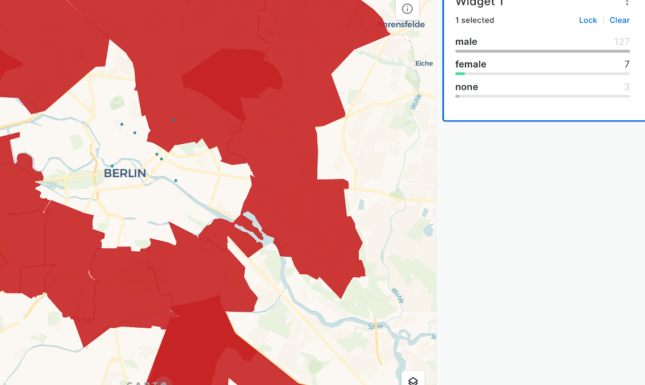
Figure 4 supports the conclusion that Mitzi’s lack of self-determined activity is demonstrative of all female characters in the novel, who only appear as primary characters seven times throughout Berlin Alexanderplatz (as opposed to 127 times for the male characters).
This short analysis shows that digital humanities tools enable us to analyze Berlin Alexanderplatz in a new quantitative way. Using Carto, we explored the link between concepts of spatiality, gender and agency, which is a connection that most secondary literature does not discuss in detail. Digital cartography thus allows us to draw new, perhaps overlooked, conclusions from fictional narratives, which can reveal patterns that contribute to important research in literary scholarship. In addition, the methodology developed in creating our datasets and maps may function as a first step to a database to which other city novels can be added—to see if these conclusions are true for other texts. In that way, the dataset may serve as a blueprint for further research on urban modernist novels .
References
Döblin, Alfred. Berlin Alexanderplatz. Translated by Michael Hofmann, Penguin UK, 2018.


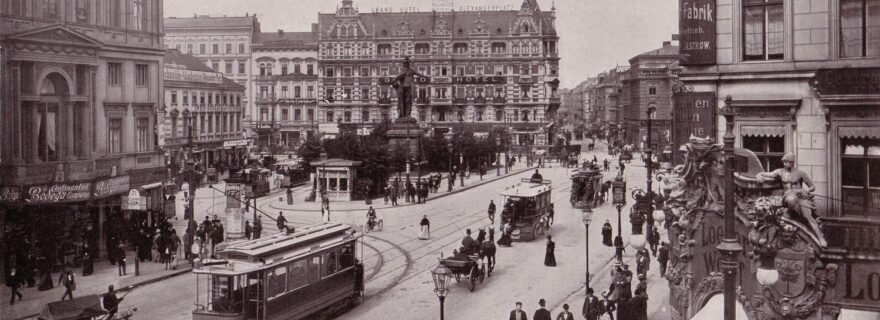
0 Comments